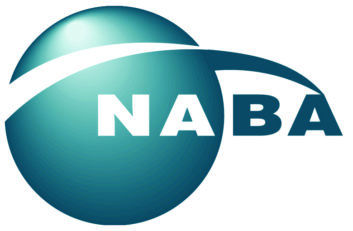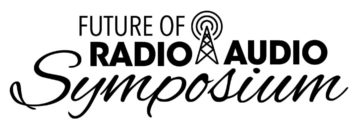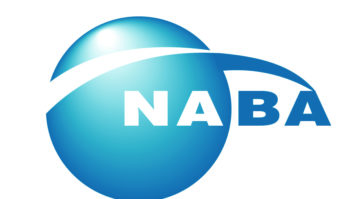 The author is director-general of NABA.
The author is director-general of NABA.
It has been a busy time for the North American Broadcasters Association, with our Radio Committee focusing on two major projects for 2019; our Technical Committee responding to comments regarding C Band and 5G; and our Legal Committee’s progress on the WIPO Broadcasting Treaty, on top of a full agenda of other issues and initiatives.
VALUE PROPOSITION OF RADIO IN A CONNECTED WORLD
NABA’s Next-Generation Radio Working Group, led by Michael Beach of NPR, is in the last stages of finalizing a paper on the “Value Proposition of Radio in a Connected World,” which defines the value proposition of radio, its strengths and future (e.g., should radio stay as a hybrid analog/digital service or should it move towards the full digital switch). Work is wrapping up on this paper, and it will be distributed within the coming weeks and posted to the NABA website.
FUTURE OF RADIO AND AUDIO SYMPOSIUM
NABA has formed a partnership with the National Association of Broadcasters to have its next Future of Radio and Audio Symposium as a part of the Broadcast Engineering and Information Technology Conference at the Las Vegas NAB Show this year. We are excited to be part of the NAB Show, and we have lined up three sessions of great content for the attendees.
 The first focuses on the “Next Generation of Radio” and will use the “Value Proposition of Radio in a Connected World” paper as a jumping-off point. The second session focuses on “Digital Radio Around the World,” the third looks at the impact of “Connected Car/Audio on Demand/Advertising and Big Data.”
The first focuses on the “Next Generation of Radio” and will use the “Value Proposition of Radio in a Connected World” paper as a jumping-off point. The second session focuses on “Digital Radio Around the World,” the third looks at the impact of “Connected Car/Audio on Demand/Advertising and Big Data.”
We have confirmed speakers from North America, Europe and Australia; it’s a truly international review of radio’s future, and I think you’ll be most interested to hear how radio embraces its next-generation moment.
Register for the conference with the NAB, and we’ll see you on April 7. (NABA members may receive a free pass to the three FRAS sessions).
C-BAND COMMENTS ON 5G
NABA filed comments in the FCC’s NPRM on making C-Band spectrum available for 5G (spectrum that has been, up to now, dedicated for the distribution and collection of television and radio content), and then went on to submit a reply to comments made by others.
Our Spectrum Subcommittee worked on our submissions for much of last year, all coordinated by Robert Weller. NABA remains concerned that new terrestrial uses in the C-Band downlink spectrum can cause significant harm or disruption to existing satellite users and again emphasizes that the principle of no harm to the broadcasting ecosystem (and the public that it serves) must be at the core of any rulemaking considerations concerning the allocation of spectrum that historically has been used by broadcasters for delivery and collection of content and services. This principle goes beyond technical compatibility in allotments and assignments and must include full compensation for any required changes to operations or equipment.
We have yet to hear a response to these submissions from the FCC, and while our satellite partners are working hard to accommodate both potential 5G deployment and existing broadcast requirements, rigorous technical field testing and careful allocation of available spectrum will define how everyone may be accommodated.
Broadcasters have used satellite delivery in the C Band for about as long as there have been commercial satellites available for this use. So by definition it’s an old technology, but it’s an old technology that really works well. Our worry is that, by introducing a sharing scheme, something that has worked well for decades won’t do so anymore.
While the FCC initiative focuses on the continental United States, we are already seeing spectrum regulators in Mexico and Canada moving towards similar initiatives in their countries, so a North American C-Band reallocation is not an unrealistic conclusion. And the impact may be seen in the Caribbean and South America for years to come.
WIPO BROADCASTING TREATY
The World Intellectual Property Organization continues to work on a broadcasting treaty to protect broadcast signals from piracy in the digital environment. This is an area where we have spent many years trying to realize a positive outcome. This past year saw proposals from a number of countries, including the United States this fall, which advanced the work to a point where 2019 may see significant movement towards a diplomatic conference, which could realize this goal.
The WIPO Standing Committee on Copyright and Related Rights is where this work gets done, and NABA and the other broadcast unions have NGO status. Representatives of our Legal Committee participated in the late November meeting with our colleagues from the other broadcast unions in the World Broadcasting Unions. There is a strong sense that WIPO member countries can build on the proposals presented, and make progress towards a diplomatic conference in 2020. As a NGO, we don’t have a vote, but we are there as a resource and to underline the importance of protecting our signals in the digital IP environment where we now reside. The activities this year should help pave the way to a positive outcome.
ATSC 3.0 — IMPLEMENTATION AND REPACK
For many years now, NABA has been involved with ATSC 3.0 work (including helping to define broadcast requirements for the new technology). Now that it has arrived and the beta sites of Phoenix and Dallas are up and running, along with NAB’s Baltimore site, we continue to support our members both at home and internationally with demonstrations in Mexico, CITEL meetings (in Brasilia in December), briefings to the Canadian regulators and government officials, and supporting Sinclair Broadcast and ATSC in their efforts to get the new transmission standard recognized by the International Telecommunications Union.
A market rollout of a new technology is not without its challenges, not the least of which is beginning implementation at the same time as the repack of frequencies is taking place within the mandated FCC schedule as a result of the spectrum auction. There are also border consequences for Mexico and Canada, and these were shared at our Technical Committee and board meetings.
The repack is at about the halfway mark, and many suggest the heavy lifting is yet to come, with basic resources like tower crews already stretched to the limit. Our aim is, to the extent possible, to share information and solutions so that the light at the end of the tunnel is not a train.
This work will continue well into the future and we are just now getting some interesting consumer expectations for Next Generation Television. Based on work commissioned by Pearl TV, we learned at our AGM in New York a few weeks ago that consumers want smart TVs, UHD TV and immersive sound and, if they get it, they are prepared to invest in new sets. Hardly revolutionary, but this kind of core research helps our industry tailor the implementation to consumer expectations — it’s a good initiative by Pearl.
And as Sinclair and the advertising industry tell us, data applications and mobile television will be critical to future revenue opportunities and consumer expectations. So whether you are a station group or a network, this is a time for developing new ways of doing our business, including sharing spectrum and experimental initiatives. Our role in NABA is to help facilitate these ideas and provide the space for discussion, reflection and, where appropriate, action in support of and to the benefit of our industry. It is an interesting and challenging time but full of opportunity as well.
FUTURE AGENDA ITEMS
Media-over-IP and all-IP production and distribution facilities will very much define our industry over the coming years. Already we are seeing IP facilities from CBS, Telemundo, NBCUniversal, ESPN, CBC/Radio-Canada and many others, either in development or nearing completion. Specific projects like news operations or sports have dominated initial efforts but full broadcast plants like CBC/Radio-Canada in Montreal are soon to become the norm.
All of this is happening in an environment where some of the IP standards are still in development; that truly is a pioneering experience for those who are embracing an IP future. NABA has done work in the MoIP area with a task force on broadcaster requirements and a workshop in partnership with SMPTE, Video Services Forum and Alliance for IP Media. With the pace of IP clearly picking up, we think more workshops, education and sharing is needed over the next few years, particularly focusing on areas which need resolution and industry consensus. To that end, this will be a continuing brief for our technical committee.
[McEwen: Radio Technology Offers New Opportunities]
And at the same time, IP poses further cybersecurity risks to our operations and services. As much as we’ve done at both the network and station level over the past years, the challenges of IP the cyber risks to new levels. Our Cybersecurity Subcommittee of specialists will guide our discussions on this subject offering potential technical and operating solutions that improve our practices and thus our security.
Workflow continues to remain at the core of our technical/operations work. We have pretty well completed common metadata specifications for file formats and put them into the relevant SMPTE standards (IMF and BXF) so they can be implemented by broadcasters in the next capital cycle; UHDTV common metadata specifications are currently being written into the SMPTE standards. This has been and continues to be a lot of work taken on by busy people, but the benefits make our operations more efficient; this more than saves the resources on a recurring basis that was spent on doing this work on a one-time basis.
The last area we need to tackle is developing the common metadata specifications for advertising (formats) and we will be doing that with Ad-ID and other advertising partners in the coming months, so stay tuned.
A CONCLUDING THOUGHT
When Radio World Editor in Chief Paul McLane asked us whether we had something to contribute in this issue, my original thought was that probably everyone knows what we’re doing and why we’re doing it.
But on reflection, I don’t think so.
Our industry, at best, is in an evolution on steroids, and at worst, a revolution in just about every broadcast technology, operational area and program genre. When I had a look at the past year and the present and future challenges, it is truly remarkable; the volume of issues and the speed of change is breathtaking. In this environment, NABA does and will continue to provide a space for frank discussion that leads to actions which respond to broadcast needs, provide solutions and strategies for the inevitable change and provide consensus representation to regulators, policymakers and global institutions to ensure broadcast interests are at the table.
Comment on this or any story. Email [email protected] with “Letter to the Editor” in the subject field.












